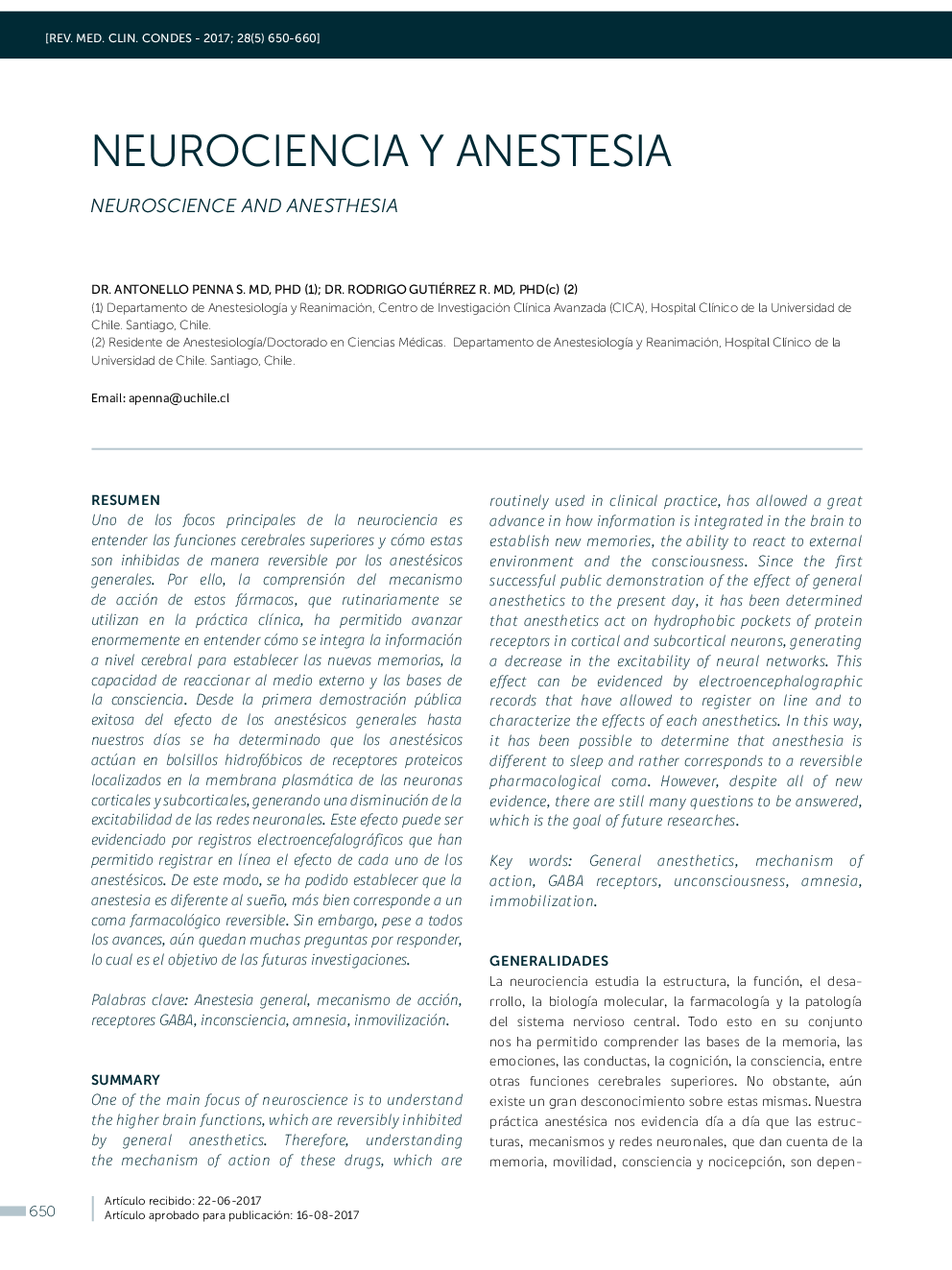| Article ID | Journal | Published Year | Pages | File Type |
|---|---|---|---|---|
| 8767516 | Revista Médica Clínica Las Condes | 2017 | 11 Pages |
Abstract
One of the main focus of neuroscience is to understand the higher brain functions, which are reversibly inhibited by general anesthetics. Therefore, understanding the mechanism of action of these drugs, which are routinely used in clinical practice, has allowed a great advance in how information is integrated in the brain to establish new memories, the ability to react to external environment and the consciousness. Since the first successful public demonstration of the effect of general anesthetics to the present day, it has been determined that anesthetics act on hydrophobic pockets of protein receptors in cortical and subcortical neurons, generating a decrease in the excitability of neural networks. This effect can be evidenced by electroencephalographic records that have allowed to register on line and to characterize the effects of each anesthetics. In this way, it has been possible to determine that anesthesia is different to sleep and rather corresponds to a reversible pharmacological coma. However, despite all of new evidence, there are still many questions to be answered, which is the goal of future researches.
Keywords
Related Topics
Health Sciences
Medicine and Dentistry
Medicine and Dentistry (General)
Authors
Dr. MD, PhD, Dr. MD, PhD(c),
